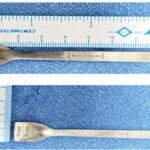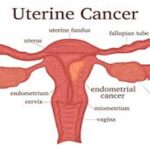- Disease causes symptoms similar to chikungunya
- Timely treatment can prevent death
New Delhi, September 15, 2017: A bacterial infection taking a toll on many, scrub typhus causes symptoms that are akin to chikungunya. In 2016, of the 150 tested for the infection, 33 were positive. There are 35% to 40% chances of fatality if the disease is left untreated. As per the IMA, there is a need for greater awareness on scrub typhus among physicians working at the primary and secondary care levels as well as for better availability of diagnostics in the healthcare system.
Scrub typhus spreads when chiggers – mites found in forests and, more recently, in urban shrubs – bite the person and inject the bacteria called Orientia (earlier called Rickettsia) tsutsugamushi into the blood.
Speaking about this, Padma Shri Awardee Dr K K Aggarwal, National President Indian Medical Association (IMA) and President Heart Care Foundation of India (HCFI) and Dr RN Tandon – Honorary Secretary General IMA in a joint statement, said, “Scrub typhus may begin insidiously with headache, anorexia, and malaise, or start abruptly with chills and fever. As the illness evolves, most patients develop high fever, worsening of headache severity and myalgias. A characteristic eschar, an ulcerated area with a black necrotic center, may often develop at the site of the bite and is diagnostic. Approximately one-half of all patients develop a characteristically nonpruritic, macular or maculopapular rash, which typically begins on the abdomen and spreads to the extremities. The face is also often involved. Patients treated with appropriate antibiotics typically become afebrile within 48 hours of starting treatment. This response to treatment is useful diagnostically; failure of defervescence within 48 hours is often considered evidence that scrub typhus is not present.”
The disease has an incubation period of 6 to 21 days, and lasts for 2 to 3 weeks. Patients with a mild infection may recover without any other symptoms. The differential diagnosis of scrub typhus includes malaria, dengue, leptospirosis, Chikungunya and other rickettsial infections.
Adding further, Dr Aggarwal, said, “Several studies have demonstrated that chemoprophylaxis with a long-acting tetracycline is highly effective when used by nonimmune individuals living or working in areas in which scrub typhus is endemic. The use of insect repellants and miticides are highly effective when applied to both clothing and skin. Permethrin and benzyl benzoate are also useful agents when applied to clothing and bedding.”
The following tips can help to prevent scrub typhus.
- Avoid travelling to places where mites are known to be present in large numbers.
- Wear protective clothing when travelling to an endemic area. Long sleeved clothes can prove helpful.
- Apply mite repellents to exposed skin.
- Those with risk factors and who work in an endemic area can be given once weekly dose of doxycycline.







